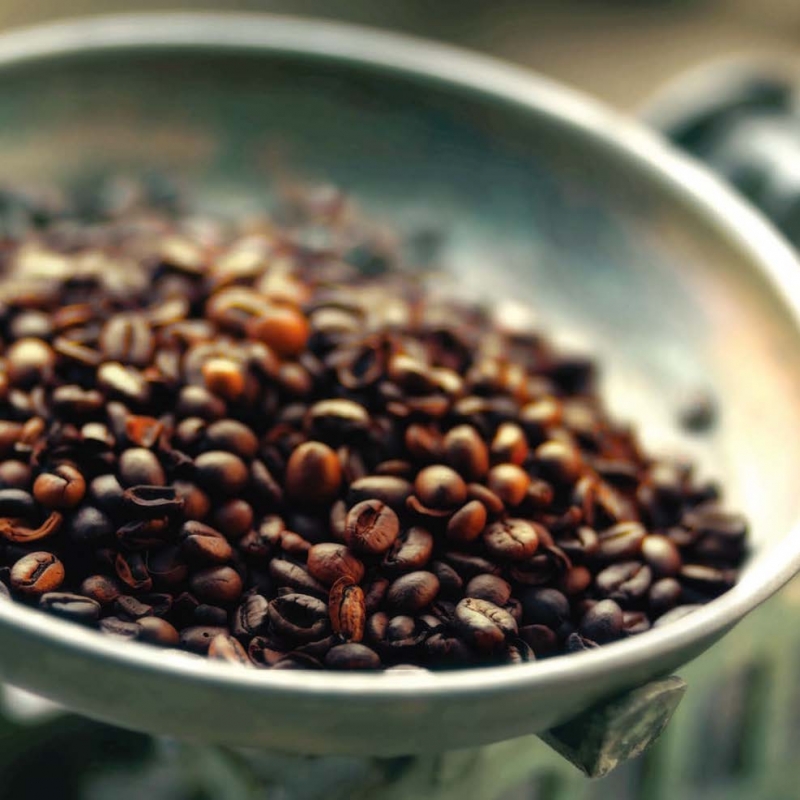How do Starbucks spell coffee beans? Why mix coffee beans?

Professional barista communication, please pay attention to coffee workshop (Weixin Official Accounts cafe_style)
Starbucks Blended Coffee Bean Product Description:
1. Guatemala Casicero
105¥
250g
Acidity: Moderate
Alcohol: Moderate
Mix: Mix before baking
Flavor: Distinctive floral notes, lemony acidity and black cocoa finish🈶
Degree of roasting: medium roasting
Processing method: washing method
Coffee production: Latin America
Similar coffee: Guatemala
Recommended pairing: sweet, chocolate, apple and berry
salty, spicy food, cheese of all kinds
2. Flora
85¥
250g
Acidity: Low
Alcohol: High
Mix: Mix after baking
Flavor: Toasted sweetness combined with black cocoa
Degree of baking: Deep baking
Processing method: washing/semi-washing
Coffee production: Latin America
Asia Pacific Region
Similar to coffee: Italian roast
gold Coast
Suggested pairings: red and spicy black forest, chocolate brownie (heated), peanut chocolate cake or similar food
3. Italian baking
85¥
250g
Acidity: Low
Alcohol: Medium
Mix: Mix before baking
Flavor: Intense and rich on the palate, rich in flavor, with sugar charring sweetness
Degree of baking: Deep baking
Processing method: washing/semi-washing
Coffee production: Latin America
Asia Pacific Region
Similar to coffee: espresso roast
Recommended pairing: dark chocolate and caramel flavoured foods
4. Sumatra
95¥
250g
Acidity: Low
Alcohol: High
Mix: Mix before baking
Flavor: Intense herbal aroma, with light rain floating earthy taste, mellow fragrance
Degree of baking: Deep baking
Processing method: semi-washing method
Coffee producing area: Asia Pacific Pingyang region
Similar to Coffee: Xianglong Synthesis, Anniversary
Recommended food pairing: classic cinnamon rolls, New York cheesecake and other foods with similar taste
Blended coffee
Although there are some fixed varieties of coffee that can be drunk directly as single-serve coffee, most coffee has more or less defects in flavor. For example: no special flavor, lack of depth, lack of intensity, or a certain flavor is too strong. To compensate for these deficiencies, several coffee beans with different characteristics are blended to create a harmonious and deep taste.
Blending coffee isn't just mixing coffee beans together. Sometimes the blending of two specialty coffees will suppress each other's unique flavor; blending is not simply a combination of several specialty coffees. Blending is like a painter adjusting and creating attractive colors on a palette. Blenders can blend attractive flavors according to the different characteristics of coffee beans. It is not too much to say that matching is an art. As an artist, the matching division not only needs experience and inspiration, but also needs to pass certain scientific calculations. The creation of works of art is not accidental, but an explosion of long-term accumulation.
Taste = coffee bean variety
acid
Mocha, Hawaiian Kona, Mexico, Guatemala, Costa Rica SHB, Gilligan Mazaro, Colombia, Long Waldo, Hemisphere Wash High Quality New Beans
bitter
Java, Mantenin, Botswana, Congo, Uganda
gan
Colombia (metinine), Venezuela (aged coffee), Blue Mountains, Gilly Mazaro, Mocha, Guatemala, Mexico, Kenya, Brazil Sandos, Haiti
alcohol
Colombia (Metonin), Mocha, Blue Mountains, Guatemala, Costa Rica
neutral
Brazil, Peru, Costa Rica, Venezuela, Honduras, Cuba
Since it is a blend, it naturally refers to more than two kinds of original beans, but a special example is that the same coffee beans with different roasting degrees can also be blended together, and even the new crop of the same coffee beans can be blended with aged coffee or old crop, so the type referred to in the blend is not a narrow coffee variety, but a broad extension to the flavor of coffee. Blending usually uses 2- 6 kinds of coffee beans, too many kinds will not be able to express the unique flavor of coffee.
Blending coffee generally does not adopt a 1:1 blending ratio, because this may inhibit each other's unique flavor, so there must be primary and secondary points to blend a more wonderful taste than single coffee. If you want to mix coffee with complex flavors, you can reduce the proportion of theme beans, and vice versa.
Blending coffee depends on trial and error, so a mathematical combination should be used to draw up a blending schedule before blending, and then the best solution should be determined through the blending-tasting process.
Don't think this is a passive approach, in fact, only the experience, inspiration and so much effort of the blender can make a good cup of coffee.
Important Notice :
前街咖啡 FrontStreet Coffee has moved to new addredd:
FrontStreet Coffee Address: 315,Donghua East Road,GuangZhou
Tel:020 38364473
- Prev

Introduction to the basic knowledge and steps of blending coffee beans, the difference between Italian coffee beans and soe coffee beans
Professional barista communication please follow the coffee workshop (Wechat official account cafe_style) these days has been collecting knowledge of blending beans, this is also the direction and field of their own efforts, put some of their own experience and feel useful things up, share with you, for friends with a common goal
- Next

The knowledge of blending coffee beans Italian blending coffee bean formula sharing
Communication of professional baristas Please pay attention to Coffee Workshop (Wechat official account cafe_style) Pure coffee is to brew coffee beans from specific producing areas, blending coffee is to mix coffee from different producing areas, so that the flavor of the coffee is changed. Tasting pure coffee is a kind of top enjoyment, enjoying its simple, unique flavor and personality; blended coffee is not bad, with a more diverse and special flavor;
Related
- Guji coffee producing area of Guji, Ethiopia: Humbela, Shakiso, Wulaga
- What is the most expensive variety of Qiloso in BOP multi-variety group?
- How to store the coffee beans bought home?
- Why are Yemeni coffee beans so rare now?
- Ethiopian Sidamo all Red Fruit Sun Sun Santa Vini Coffee beans
- SOE is mostly sour? What does it mean? Is it a single bean? what's the difference between it and Italian blending?
- Is Italian coffee beans suitable for making hand-brewed coffee?
- How to choose coffee beans when making cold coffee? What kind of coffee beans are suitable for making cold coffee?
- Just entered the pit to make coffee, what kind of coffee beans should be chosen?
- Can only Japan buy real Blue Mountain Coffee? What are authentic Jamaican Blue Mountain coffee beans?

